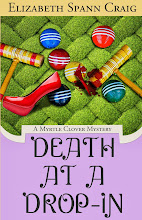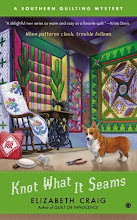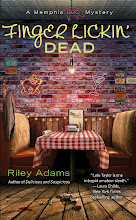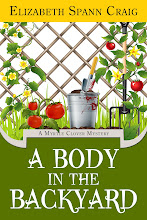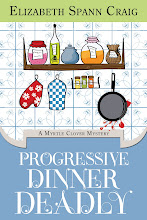 I was busily writing at home last week when my husband called me up and asked if I wanted to meet him for lunch. I hopped in the car and drove the 25 minutes over to his office to pick him up.
I was busily writing at home last week when my husband called me up and asked if I wanted to meet him for lunch. I hopped in the car and drove the 25 minutes over to his office to pick him up.
Usually when we have lunch, we eat at a sandwich shop or get some Chinese food…nothing fancy.
This time, though, my husband was interested in going to the City Tavern—a white tablecloth-type establishment.
It sounded good to me. But then my husband hesitated. “Do we look all right?”
I glanced over at him—blue jeans (he works in IT) and a golf shirt. I looked at myself and I was wearing something such as a person writing at home might wear on a warm day—flip flops, capris, tee shirt. “We’re good!”
I was driving us over to the restaurant and chatting away about my morning when he asked again if I thought we looked okay.
I said something like, “Sure we do!” and continued on my train of thought.
But the third time he said it, we were about to go into the restaurant. I said, “Sweetie, I don’t think they’re going to turn away paying customers. We don’t look that awful.” He seemed so reticent, that I finally realized that even though I rarely care what I look like, it was important to Coleman. He’s a professional person. He might run into people he has a work relationship with.
I peeked in. I saw other people in jeans. One person had flip flops. We were okay.
Just because it wasn’t important to me, didn’t mean it wasn’t important.
I think that’s why it’s vital for me to have first readers (my parents, mainly) before my manuscript goes to my editors. Sometimes there are book elements that I don’t spend a lot of time writing (I always need to fill in more setting). Just because it’s not important to me, though, doesn’t mean it’s not important to a reader.
My mother is a great first reader for me. “I can’t really picture the porch at the barbeque restaurant,” she said.
I could picture it plainly…in my head. But I hadn’t put my vision on paper at all. It was as if, if I could see it, I thought everyone could see it.
A content critique is vital, I think. Sometimes I think I’ve established the relationship between different characters very clearly—but, again, it might have just been clear to me and I didn’t share it with the reader.
And then, like at the restaurant, there are things that I just don’t enjoy developing in a book. But I need to know when readers need more information: on setting, on character description, on backstory. Those are things I don’t incorporate a lot of—but that sometimes are more important to readers than I think.
Do you have a first reader that you give your manuscript to before its submitted?





